
Report on the 2006 AA-EVP Conference
(The name of the association has since been changed from AA-EVP to Association TransCommunication)
The conference was a complete success by all accounts. All of the speakers we present and prepared, the attendees were attentive and the media was out in force. By one account, the conference was the “International ITC event of the year.”
The Presentations

The Thursday Evening session was led by Tom and Lisa Butler. “EVP 101” is the title of the workshop Tom and Lisa teach. Portions of that were presented by them Thursday night. Should they decide to teach an Instructor Certification Course, EVP 101 would be in the core suite of lessons.
The presentation included a discussion about the characteristics of EVP presented by Lisa Butler, followed by a discussion about the basic “how to” for recording EVP. Experience has shown that individuals develop a personal, often unique way to record for EVP, but that it is best for people new to the field to first learn a way that is most likely to produce EVP. The instructions on the website provide the essence of those procedures. See Basic EVP Recording Techniques
Friday morning opening comments for the conference were especially important to Tom, because he managed to surprise Lisa with a new HP Palm Pilot, which would replace her often folded yellow paper “Personal Data Assistant.” Tom pointed out in the presentation that the conference would not have taken place were it not for Lisa’s initiative and hard work. Debbie Caruso was a fellow conspirator in helping Tom surprise Lisa.
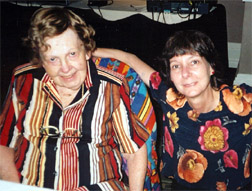 [Photograph for Becky Estep] |
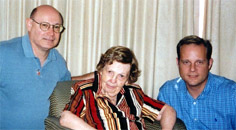 [Photograph for Becky Estep] |
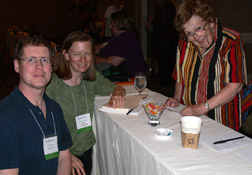
[Photograph for Becky Estep]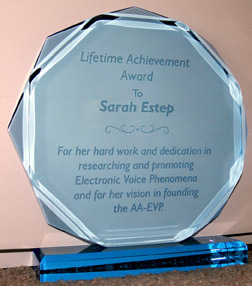 presented a brief introduction about her experience with EVP and then some of her best EVP examples were played, ending with a one minute EVP containing music thought to have been originated by Ludwig Beethoven.
presented a brief introduction about her experience with EVP and then some of her best EVP examples were played, ending with a one minute EVP containing music thought to have been originated by Ludwig Beethoven.
At the conclusion of the presentation, Sarah was given a Lifetime Achievement Award.
You can hear the Beethoven EVP here
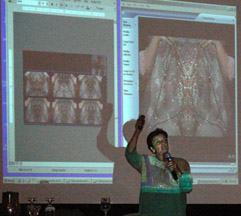
Sonia Rinaldi described her work with EVP/ITC, in which she uses a computer and a video camera operating in a mirrored mode. We were all fascinated by the faces she is finding in the optical noise, as they are unlike any we are seeing from other researchers. This new site ipati.org
Laurie Monroe brought the attendees up to date about how The Monroe

Institute is learning to apply Hemi-Sync technology to improve human potential. One slide, in particular, seems to tell The Monroe Institute story: “The Monroe Institute proposes to introduce, at all levels of human endeavor, an ability of mental and spiritual functioning that will constructively change humankind’s direction and destiny.” monroeinstitute.com
We regret to inform you that
Laurie made her transition in 2006.

Paolo Presi presented the work of Il Laboratorio. To our knowledge, this is the only organization in the world that is organized and dedicated to the study of trans-etheric phenomena with the use of clinical/forensic quality tools. His detailed presentation illustrated how the voices of EVP might sound like the voice of the person while still in the physical, but that the formation of the voice is sometimes impossible to produce with a human voice apparatus. On a similar note, he also described how face recognition software is able to help certify that the face found in transcommunication is the same as the face of the person while in the physical. See The Work at Il Laboratorio for the transcript of Presi’s Il Laboratorio presentation.
Paolo Presi later translated the documentary video of Marcello Bacci, the man who continues to conduct two-way, real-time communication with people on the other side with a short wave radio. Bacci even brings family members into his home to speak with their discarnate loved ones. See The Instrumental Transcommunication Work Of Marcello Bacci for the transcript of Presi’s Bacci presentation
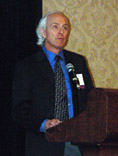
Mark Macy gave an overview of some of the astounding communications that occurred in Europe during the late part of last decade. This included reports of telephone conversations he has had with Konstantin Raudive after Raudive’s transition. Mark uses a device known as a “Luminator” to take ITC pictures. The device is believed to modify the subtle energy environment near it, and was initially used as an aid for medical diagnoses. Mark has found that he will sometimes find “extras” in Polaroid picture taken of peoples standing in the field. worlditc.org
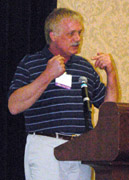
Dr. Allan Botkin’s Induced After Death Communication (IADC) presentation produced a number of points that have to be further investigated. For instance, he told the attendees that he saw evidence that too much grief could block an IADC. He also said that it seemed very much like an assistant had shared an IADC with the patient. His IADC success rate had been less for patients who knew about the process beforehand, and that he sometimes needed to “sneak up on them” to make the induction. His success rate also seemed to be much greater if he doodled while with the patient. Gary Schwartz told us that many mediums doodled, which suggests an entirely new direction for research. induced-adc.com
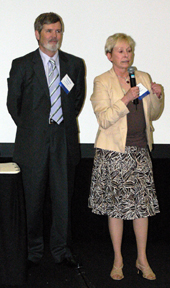
Lisa Butler presented a number of success stories that are considered to be important role models for others to follow.

Tom Butler followed with the observation that it is time to standardize the way phenomena are
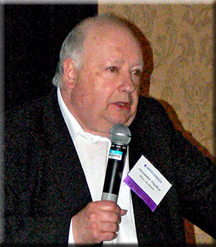
described, and suggested “Unique Event” for experiences with none other to compare, “Indeterminate Event” for “true” phenomena that cannot be distinguished from the mundane and “Established Event” for phenomena such as EVP. He also gave an overview of the forms of visual phenomena being reported to the AA-EVP. He finished with a description of the 4Cell EVP Demonstration, explaining how effective a protocol is for EVP research.
Long-time EVP researcher Alexander MacRae

gave the audience an overview of how he became an EVP researcher and how he has evolved his research tools. It was easy to see why his work is so often quoted by us.
Diana and Alan Bennett were instrumental in the successes of the Scole Project and have now turned their attention to visual forms of spirit communication with very impressive results, which they shared with attendees. We will try to include an article featuring the Bennett’s work in the next NewsJournal. Their technique is easily replicable in a mechanical sense, but Diana and Alan reminded the attendees how important it is for the person to make contact with the entities via meditation and respect.
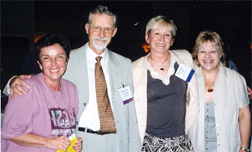 [Photograph for Becky Estep] |
|
|
|
|
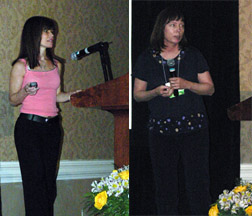
Martha Copeland presented for the Big Circle and played many EVP examples. She invited Vicki Talbott and Debra Caruso to join her at the podium to describe their success with EVP. The fact that three mothers were able to tell the attendees about continuing their relationships with children now on the other side provides an important role model for all of us. About their talk, William Deluca wrote, “It gave me reassurance that what we are doing is for real and comforts us when we really need it.”
We regret to inform you that Debbie has made her transition.
|
|
 [Photograph for Becky Estep] |
The final presentation was made by Dr. Gary Schwartz who described his early work with survival researcher, Susy Smith, and the events that led to the development of his current research protocols. Gary’s study of

[Photograph for Becky Estep]
mediumship is producing an important, evidence-based map of what might be thought of as “organic” spirit communication, as opposed to the technology-augmented spirit communication practiced in EVP and ITC. His work has produced some of the most substantial evidence of postmortem survival of the personality available today.
Those of you who have followed Gary’s work will recognize that the 4Cell EVP Demonstration protocol has been inspired by the protocols he has developed in an effort to answer the critic’s questions. veritas.arizona.edu
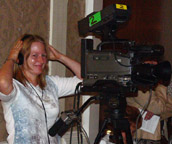
We should note that the media was well represented at the conference by four documentary crews
Unless otherwise noted, photographs were taken by Jim Stonier
![]()

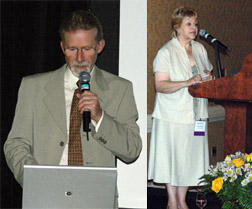
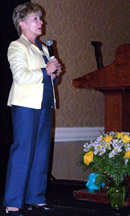
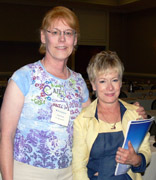

I was so lucky. I atend this conference and meeting Vicki Talbot, my old friend Sonia Rinaldi and my New friend Sarah Estep.